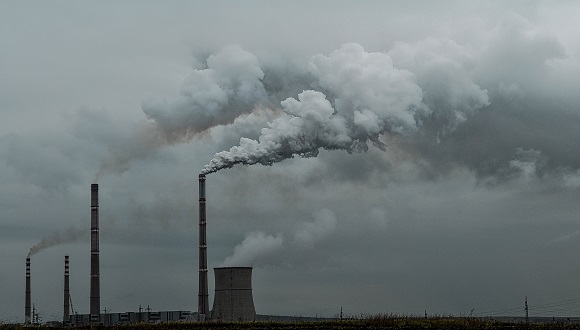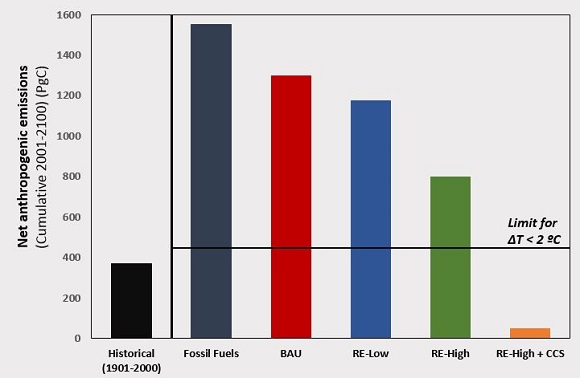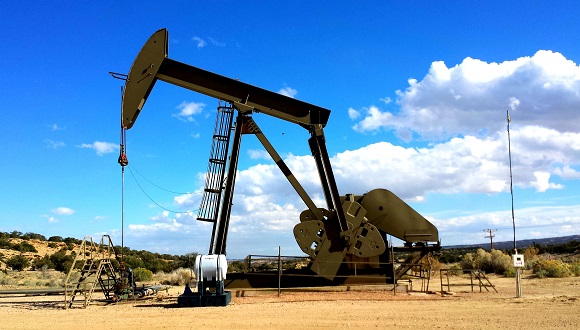Achieving the COP21 agreements is currently far-fetched
The COP21 set the maximum temperature increase for 2100 at 1.5° C. The only scenario which would allow achievement of this goal would require vastly reducing human CO2 emissions, significantly increasing the prominence of renewable energies, and the use of some type of artificial carbon sequestration technology.

Scaling back and even putting a hold on anthropogenic carbon dioxide emissions to stay below a 1.5° C temperature increase for the year 2100 currently seems like an impossible task. Notwithstanding revolutionary and yet-unforeseen technological advances, CO2 emissions will probably reach their peak within the next ten years. The only way to curb climate change includes drastically reducing fossil fuel use in favor of renewable energies or applying carbon capture and sequestration technologies which would artificially remove it from the atmosphere. The outlook is even bleaker since Donald Trump announced that the United States would withdraw from the anti-climate change pact achieved at the Paris summit.
“The quantity of carbon dioxide can be reduced in two ways: stopping emissions or taking it out of the atmosphere by sequestration in natural sinks such as plants, oceans, and soils. This might also be done with human technology, but at the moment that is still inviable,” says Josep Peñuelas, CSIC researcher based at CREAF and one of the authors of a new study published in Nature Communications. Since it appears that the option for reducing emissions is not likely, this effectively lessens the potential role of natural atmospheric carbon sinks. It is also the case, as shown in the study, that from 2002 to 2011 anthropogenic CO2 emissions were double the amount that the Earth was capable of absorbing in oceans, soils, and plants..

Projection of net cumulated carbon anthropogenic emissions for different scenarios by 2100. First column shows historical emissions during the 20th Century. The second one projects the worst scenario, where the consumption of fossil fuels rises and the renewable energies are not used. Red column shows a business-as-usual scenario that mantains the current dynamics. The fourth one indicates emissions in case of a slight development of renewables and a low reduction of fossil fuel consumption. Green column reflects the most ambitious scenario, where renewable energies growth faster (5% per year) and the consumption of fossil fuel isgreatly reduced. Last column, the only one that does not exceed a 2º C increase in 2100, shows the combination of the most ambitious scenario with use of Carbon Capture and Sequestration (CCS).
Four scenarios, none of which lead to the achievement of the 1.5° C objective
The new study poses four possible future scenarios which are combined with different degrees of renewables development and fossil fuel use. One of the scenarios assumes the continuation of the current model of growth and consumption; in this case, it is predicted that in 2100 carbon dioxide emissions would be 20% greater than today and average temperatures would rise to 3.3° C above those before the Industrial Revolution.
“In fact, the best of the scenarios posed leaves us quite far from the COP21 objectives: the foreseen increase for the most ambitious scenario was 2.5° C,” says the researcher. In this scenario, rapid deployment of renewable energy would be necessary, with a constant annual growth within the sector of 5% (between 2013 and 2014 it was only 2.6%), in which carbon dioxide emissions would reach a maximum in 2022. This case would also require that use of fossil fuels as a primary energy source is reduced by 75% in 2100, and would also require putting a stop to activities that release large amounts of CO2 such as deforestation.

With this less-than-rosy outlook, the study then moves to consider the option of developing technology on a large scale to artificially remove carbon dioxide. In the case of combining the best of the scenarios with this technology, the temperature would remain below 1.5° C – reaching 1.4° C but never being sufficient to “cool” the planet. In any case, such hypothetical CO2 sequestration technologies are currently insufficiently developed and inviable on a large scale since they carry huge economic costs and environmental problems. For this reason, says Peñuelas, “it is essential to achieve carbon-neutral societies where emissions are inferior to the capacities of sinks for CO2 capture.”
ARTICLE
Walsh B., Ciais P., Janssens I.A., Peñuelas J., Riahi K., Rydzak F., van Vuuren D.P., Obersteiner M. (2017). Pathways for balancing CO2 emissions and sinks. Nature Communications 8, 14856. DOI: 10.1038/ncomms14856






